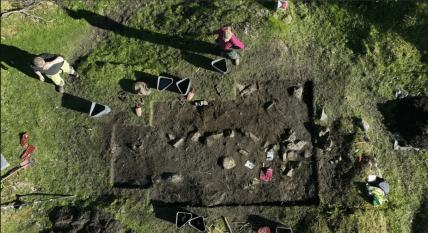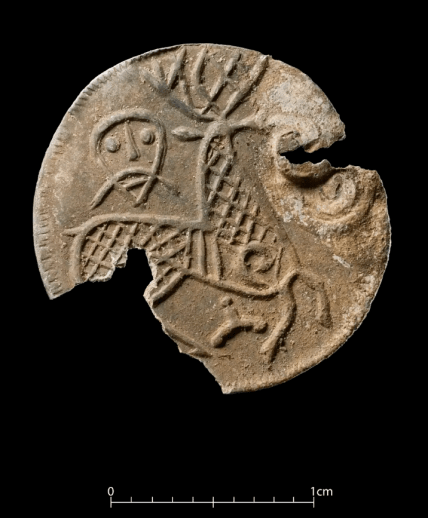In Norway, Viking-era female graves have been uncovered, revealing astonishing artifacts (photos included).
Archaeologists conducting excavations on the western coast of Norway have uncovered three Viking graves. Inside, they found a true treasure — coins from distant lands, jewelry, and a peculiar symbolic stone carved in the shape of female genitalia.
This is reported by the scientific portal Live Science. Interestingly, these burials are believed to have belonged to women.
It is known that the unusual graves were discovered near the ancient farm of Skumsnes in Fithyare (Norway). They date back to the early 800s AD — the Viking Age.
The burial was found using a metal detector. It is specified that only a portion of the possible twenty burials was identified.
 7
7
The remains in the graves have long since decayed, but their burial items have survived remarkably well to this day. In the graves, archaeologists managed to uncover a true treasure — jewelry, beads, brooches with fragments of textiles, coins, and stones with symbolic markings.
Some of the jewelry and coins were brought from far-off places like Ireland, England, and the Frankish Empire, which at that time encompassed much of Western Europe.
The most striking find was a rare coin from southern Denmark, which featured a Viking ship on one side and a deer on the other.
 8
8  9
9
The body of one of the women was buried in a crevice of the rock, which was filled with stones after the burial. Such a burial method was not uncommon among Vikings living along the coastline.
Jewelry and brooches were found in the grave.
 0
0  1
1
In another burial, a woman of high social status was laid to rest. This is indicated by the fact that instead of a tombstone, the grave was marked with stones arranged in the shape of a four-meter-long boat, connected by real ship rivets.
At the site where the mast should have been, archaeologists discovered a stone shaped like female genitalia. This presumably indicated that the burial was of a woman.
 2
2
In this same grave, archaeologists found shears for wool, a spindle, and other items used for textile production, as well as a bronze key.
This suggests that the woman to whom this grave was dedicated held a high status: textile production was prestigious, and the key indicates that she was the head of the household.
Among the other items found in the burials were brooches, various jewelry, and a necklace made of 46 glass beads and 11 silver coins.
 3
3
All these finds prove that during that time, Vikings engaged in long-distance trade and actively migrated. It was also established that the women buried in these graves "had some connection with continental Europe."
"They may have come from abroad and married local community members," the material from Live Science states.
 4
4
Recall that scientists discovered petroglyphs dating back about 4,000 years. It is believed that these rock carvings were made no earlier than 1500 BC. Many researchers hold the view that some petroglyphs depict male genitalia and are referred to as "Binutbuto," while others depict female genitalia.
Previously, "Telegraph" reported that scientists found the oldest needles in the world. The findings date back to the period from 7049 to 6568 BC, making them around 9,000 years old. It is assumed that the needles were used not only for simple tasks but also for more complex ones — for example, for sewing tents.